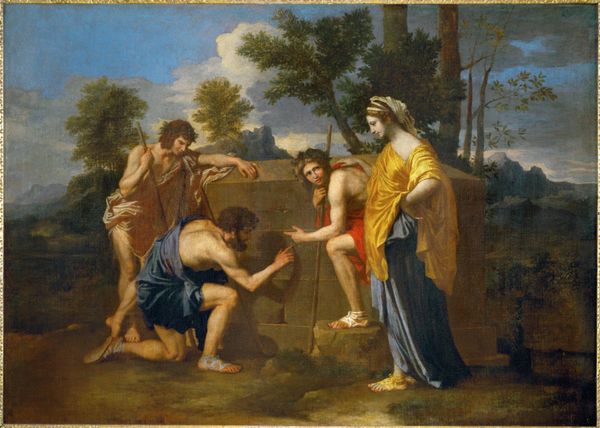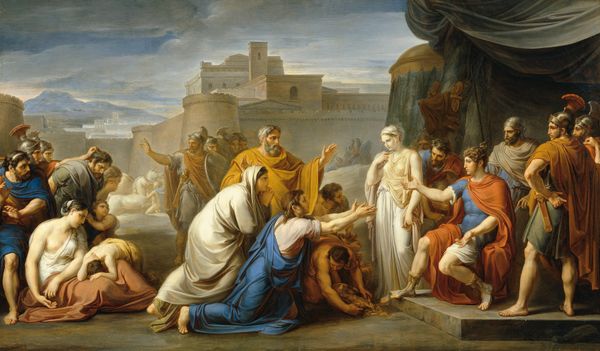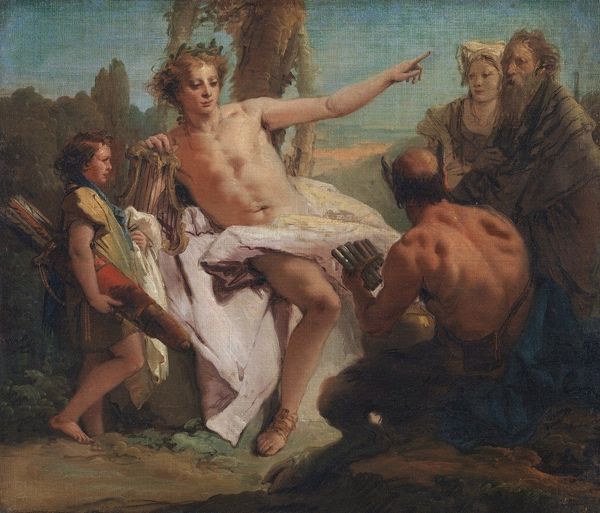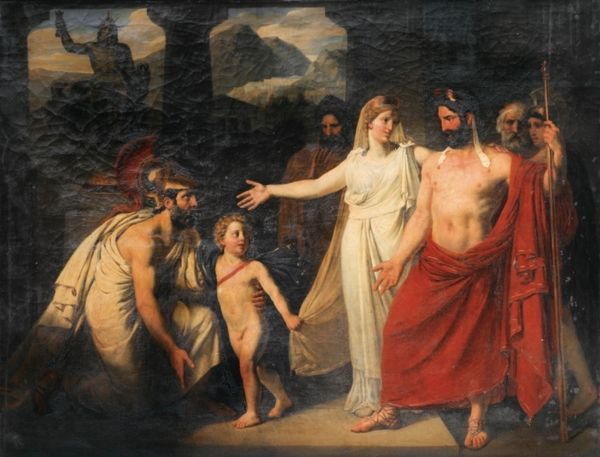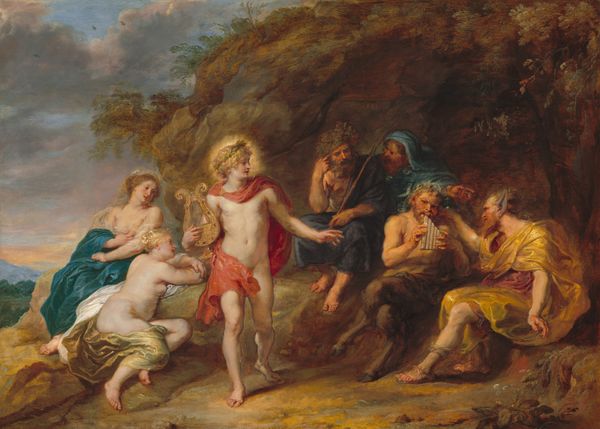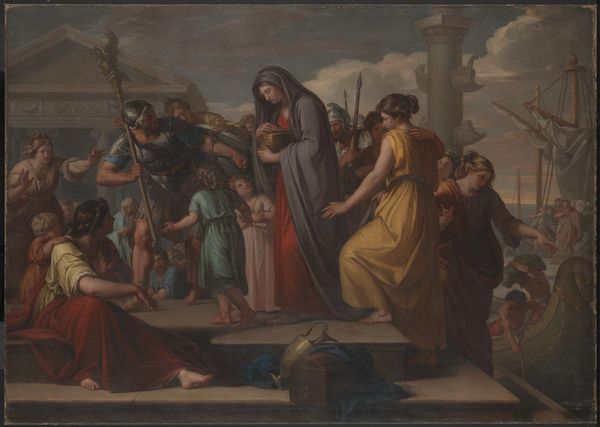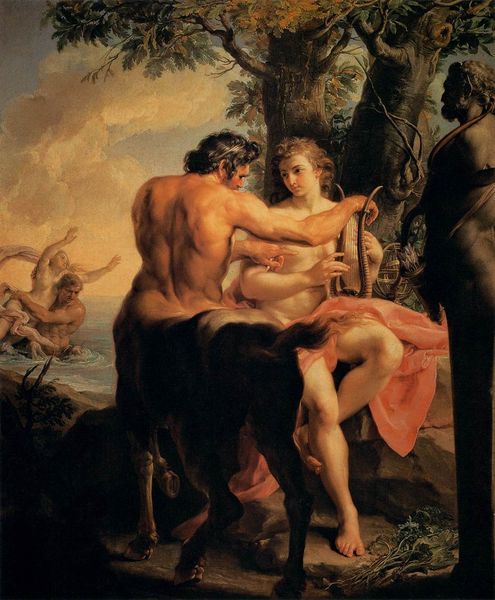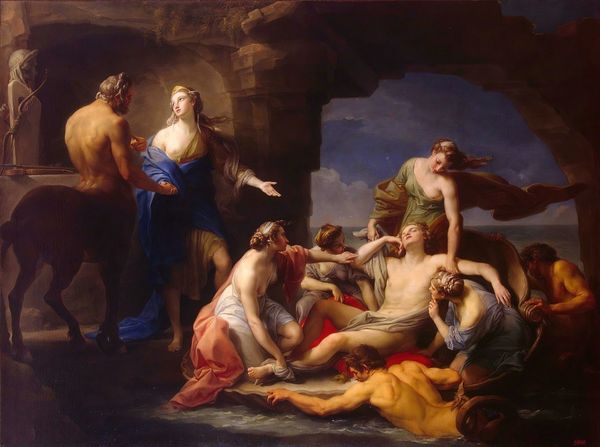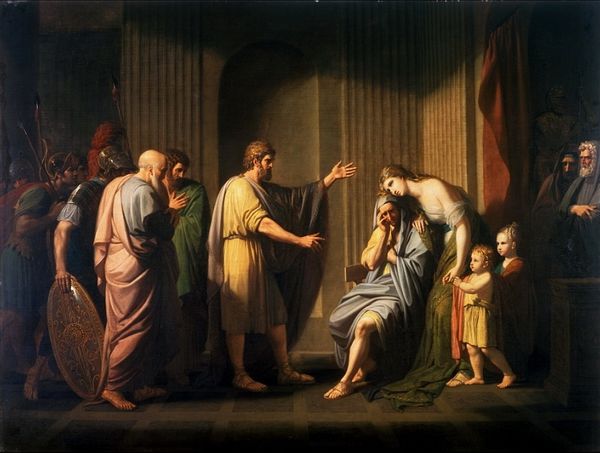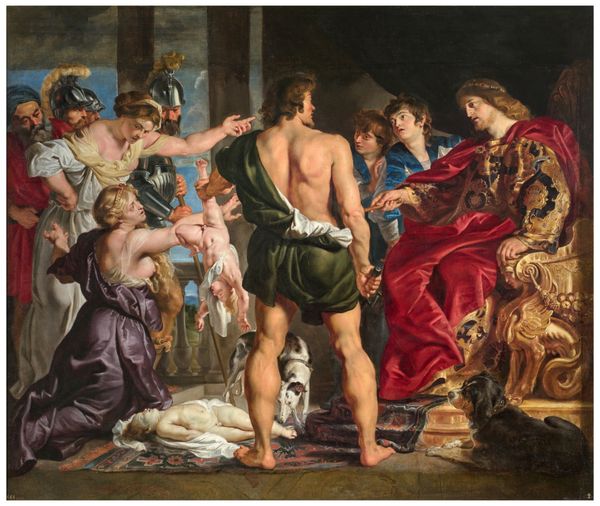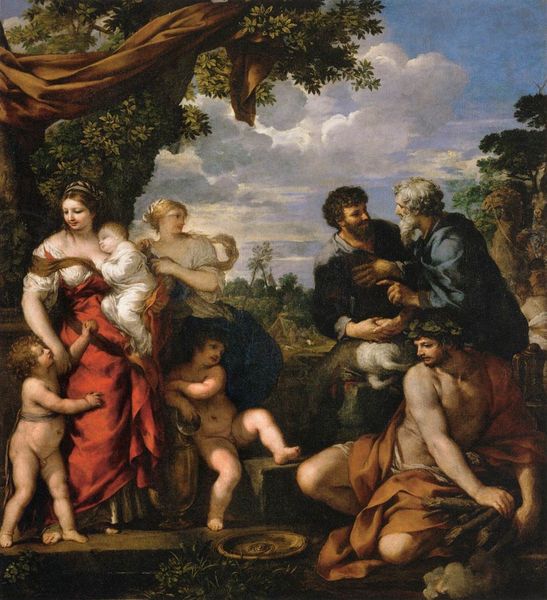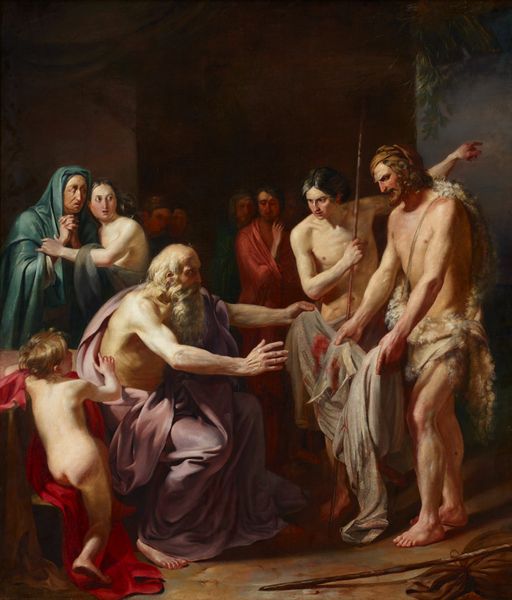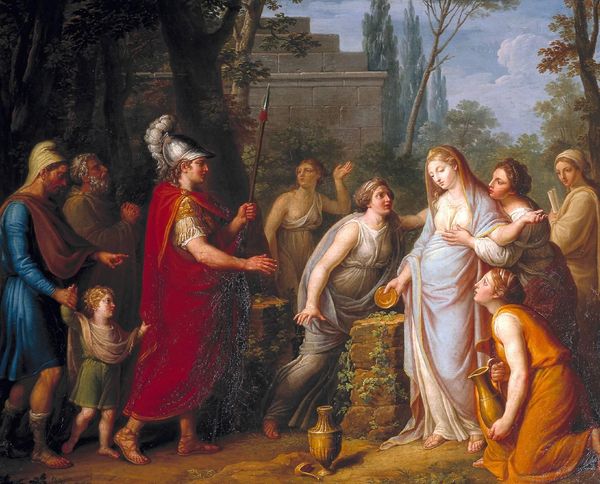
Paris with the shepherds (Paris saved by Agelaus) 1803
0:00
0:00
painting, oil-paint
#
neoclacissism
#
narrative-art
#
painting
#
oil-paint
#
figuration
#
oil painting
#
history-painting
#
academic-art
#
portrait art
Dimensions: 43 x 63 cm
Copyright: Public domain
Curator: This oil painting by Vincenzo Camuccini, executed in 1803, is titled "Paris with the shepherds (Paris saved by Agelaus)." Editor: The first thing that strikes me is the stark contrast—figures illuminated almost theatrically against a landscape that fades into the distance. It feels like a stage. Curator: Indeed, the piece belongs to the Neoclassical movement, steeped in historical narrative. This work depicts a moment from the story of Paris, later of Trojan War fame. The shepherd Agelaus was instructed to abandon the infant Paris, but, moved by compassion, he secretly raised him. The painting highlights this moment of salvation, presenting complex issues regarding class, autonomy, and destiny. Editor: I'm immediately drawn to the symbolism. Agelaus’s cloak, that bold, rich color…it's reminiscent of royalty and sacrifice, don’t you think? And Paris—swaddled in white—is this innocent potential. He embodies ideas of innocence and purity juxtaposed against the rustic life represented by the shepherd’s dress and staff. Curator: Precisely. Camuccini employs these visual cues to allude to Paris's future role and question the societal norms that condemned him at birth. His destiny was determined not by birth but by circumstance, an instability within the ancient hierarchy, represented through class. Editor: The faces, too, seem deeply symbolic. The figures in the left seem shocked or in disbelief at the moment, the saviors display stoic reserve, and the baby has wide open eyes. They seem intentionally composed and very communicative about these very emotional aspects. Curator: These kinds of compositions and tropes have permeated western art for centuries. It is one of those narrative through lines that allow people to feel an innate connection. Editor: I agree. Examining these inherited mythologies exposes enduring truths about power, empathy, and resistance. Thank you, it certainly is thought provoking to consider where destiny is predetermined or if we have some agency within it. Curator: It offers, perhaps, a reminder that seemingly small acts of kindness, of resistance, can alter the course of history. I always love engaging in conversations around destiny and morality in artworks.
Comments
No comments
Be the first to comment and join the conversation on the ultimate creative platform.
